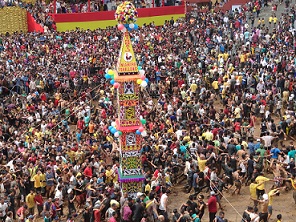
SHILLONG, JULY 11: The ancient Behdienkhlam festival celebrated by the Pnar (Jaintia) tribal community culminated at Jowai on Saturday amidst pomp, gaiety and religious fervour.
The festival is the ritualistic expression of the relentless struggle of mankind against disease since the dawn of civilization. It is the most important and colourful festival of the Jaintias and is celebrated mid-July every year after the sowing is over.
“Khlam” means ‘Plague or Pestilence’ and “Beh Dien” means to drive away with sticks.
“According to mythology, it had been foretold that there would be a widespread plague in Ri-Pnar (Land of the Pnars) and, therefore, people sought help from their protector deities Mulong, U Mukhai and Musniang who advised them to hold the festival annually in the spirit of good will, brotherhood and joy,” says a Pnar elder.
The four-day celebration, which culminated on Saturday, saw thousands of followers of the indigenous Niamtre faith converge at Aitnar (a muddy pool), dancing to the tunes of the traditional pipes and drums, while “Khnong”, a wooden post and rots’ (‘rath’), tall-decorated structures of various shapes and sizes, which are the main attractions of the festival, were carried amidst chants and cheers.
Altogether 12 rots that were brought to Aitnar pool today.
Megalaya deputy chief minister RC Laloo witnessed the coulourful festival in the presence of Deputy CEM of the JHADC A Shullai, additional DC West Jaintia Hills DM Wahlang, acting Doloi Puramon Kynjin besides other senior government officials.
“During the three-day rites, Dolois (chieftains) performed a number of religious rites to chase away the evil spirits such as plague, epidemic. Young men, in a symbolic gesture of driving away the evil spirits, beat the roofs of every house with bamboo poles,” says S. Rymbai, a resident of Jowai.
Other highlights of the celebration were – the fight for a large undressed beam by two groups of people in opposition to each other at Wah Aitnar, dancing at the pool by both young and old, a game played similar to football, called Dad-Lawakor, which was played with a wooden ball between two sides. The merrymaking also continued till late night.
The youth of each locality display their artistic skills by erecting coloured ‘rots’ – 30-40 feet tall structures built of bamboo, coloured paper and tinsel. Competition flares as each group tries to outdo the other in making the tallest and most artistic ‘rot’.
The climax of the celebrations is the tussle, as seen in a tug of war, for the ‘Khnong’ by two groups of people opposed to each other. The trunk along with the colourful ‘rots’ is then immersed in the muddy waters of the Aitnar pool.
The festival is also an invocation to God seeking blessings for a good harvest. Women offer sacrificial food to the spirits of the ancestors and the ancestress.- By Our Reporter

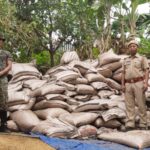

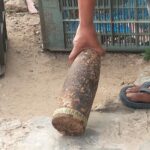

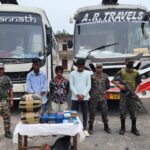
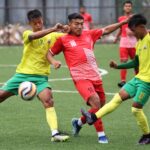
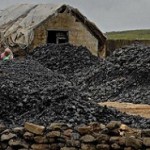

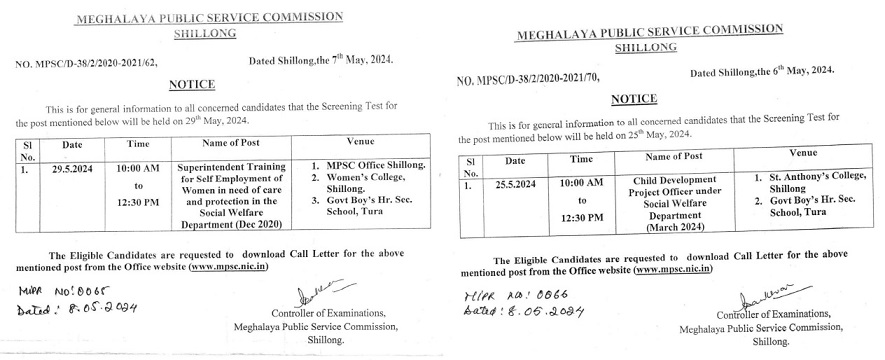

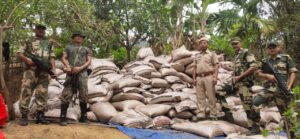
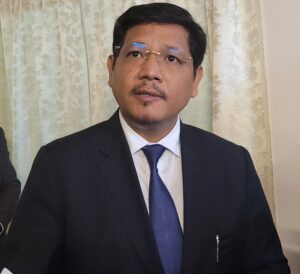

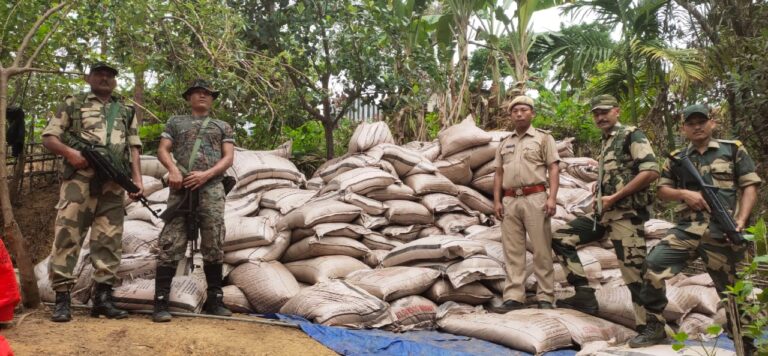

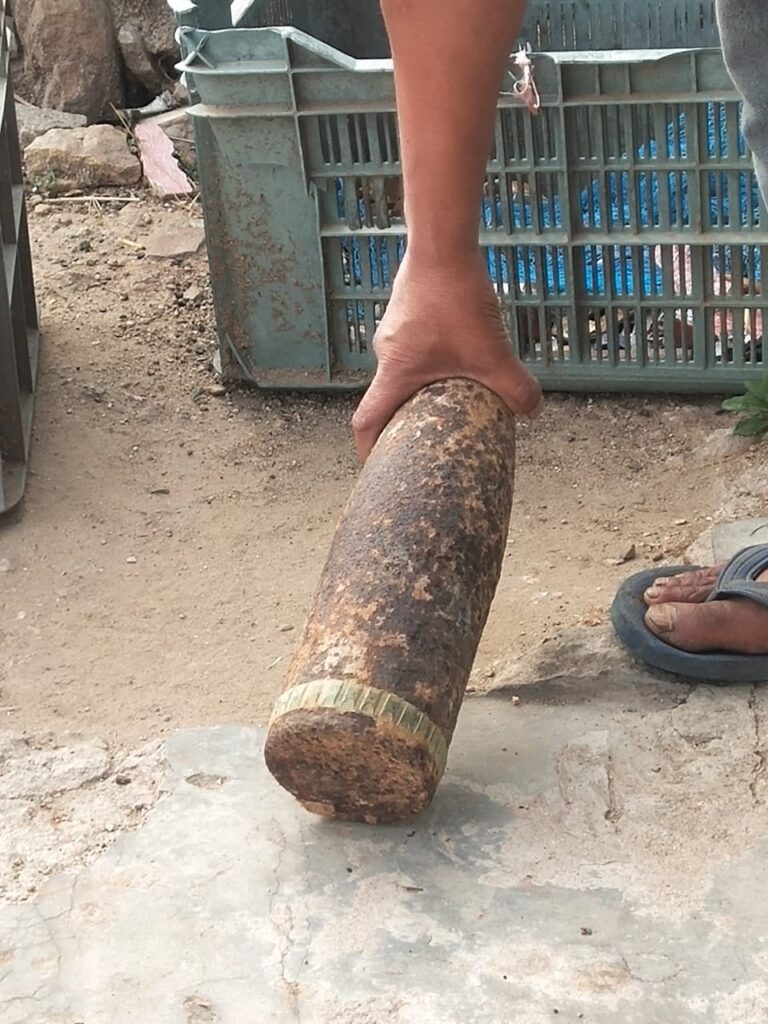

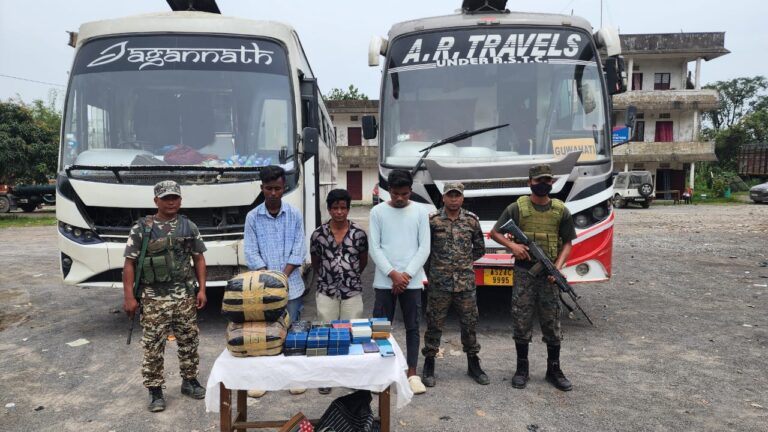
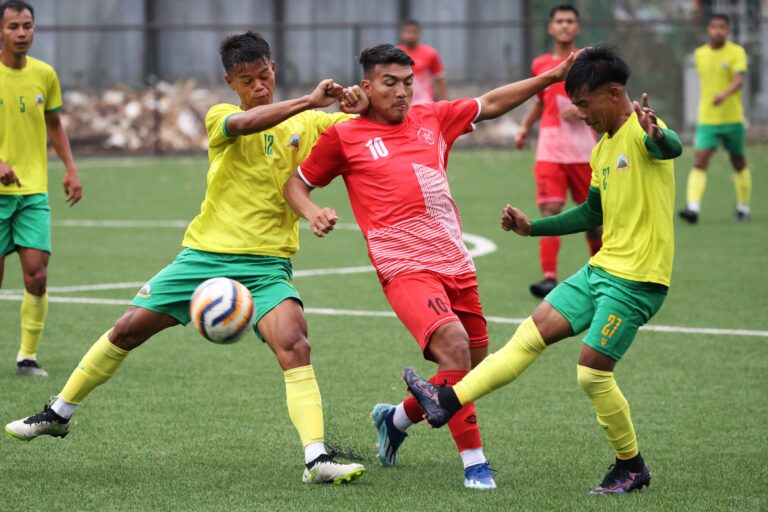
+ There are no comments
Add yours